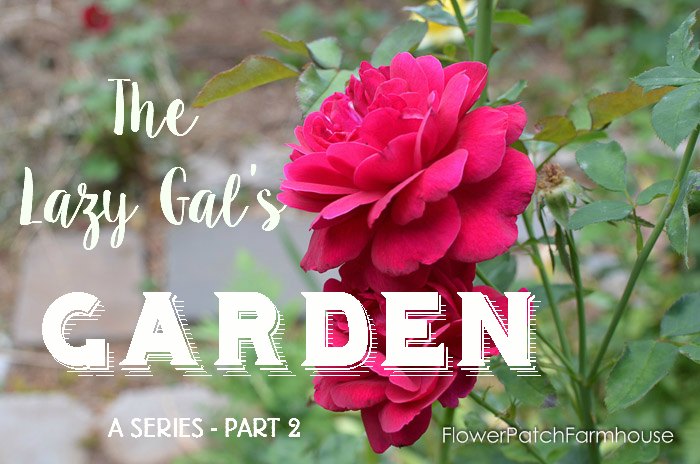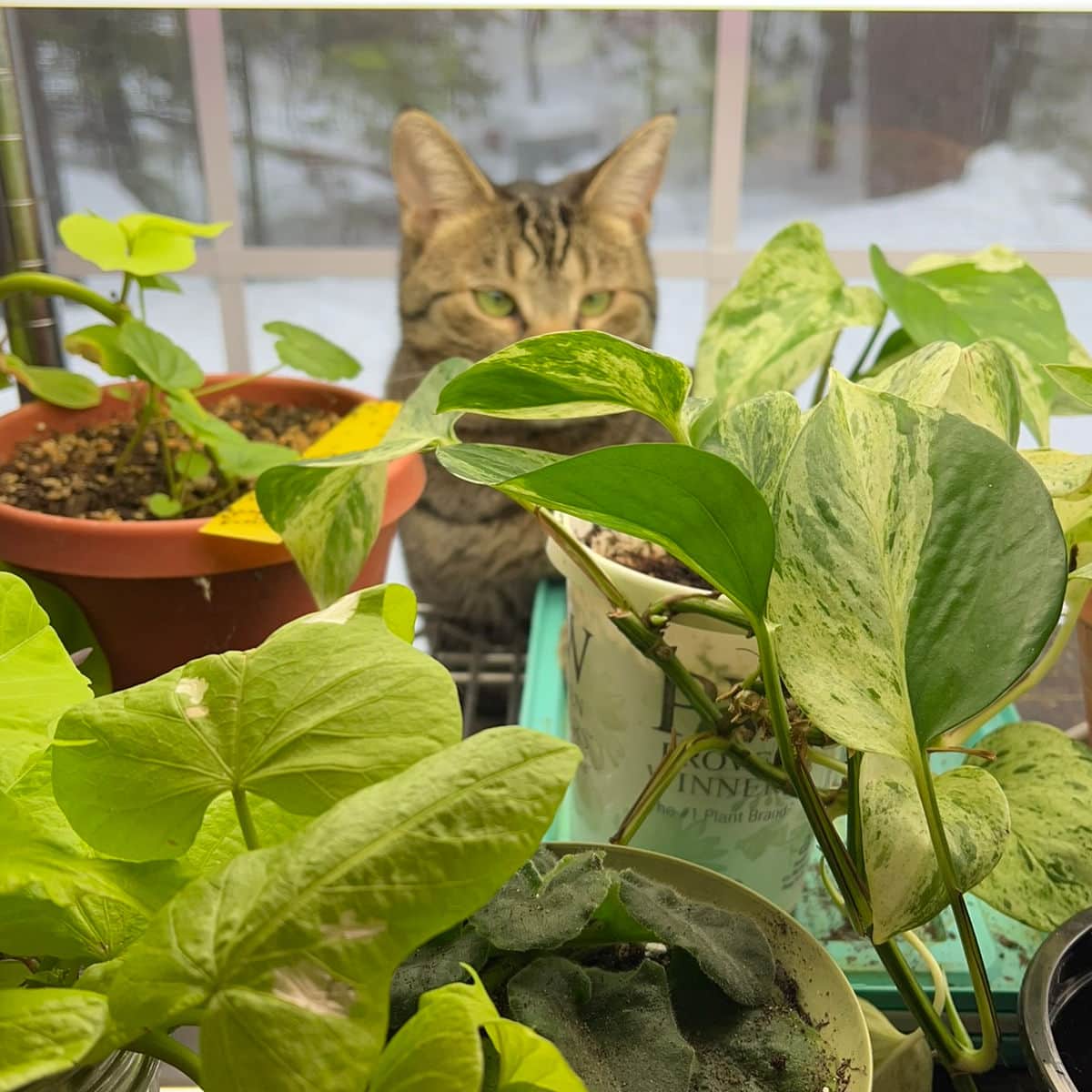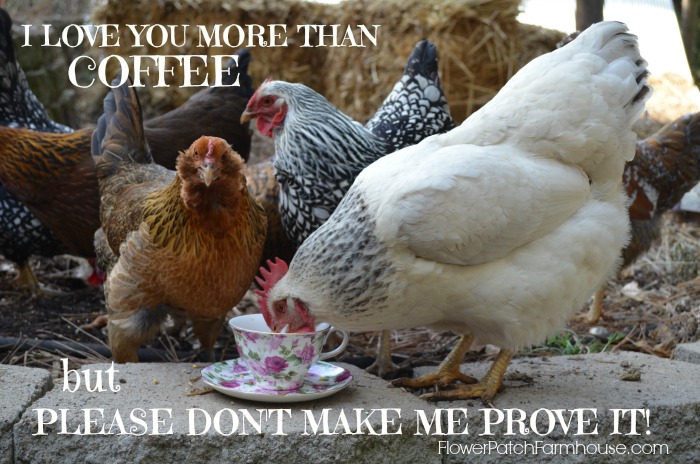Planting Begonias
Planting begonias from tubers can be a bit daunting. Tuberous Begonias, when dormant, are hard to tell which side it up. How to plant begonias in pots for an early and healthy start.
Are Begonias Annuals or Perennials
Types of Begonias
Today we are talking about tuberous begonias. They are grown for their beautiful flowers and not their interesting foliage. Tuberous begonias are not typically grown as a houseplant and do much better when the tuber is allowed to go dormant in Fall and stored rather like dahlias.
Many may be familiar with these other types of begonias; Wax begonias and angel-wing begonias are usually grown as outdoor annuals or indoor houseplants. You often see them in garden beds in shady areas. Both grow from a clump of roots and are winter hardy in growing zones 9-11. So technically they can be a perennial but most often they are grown as an annual.

This post contains affiliate links. If you make a purchase after clicking a link I may make a small commission at no cost to you.
Rhizomatous and rex begonias are valued for their beautiful foliage. They grow from creeping roots and are usually kept as houseplants. I have a few of these myself and love them indoors.
Begonia grandis is a hardy perennial begonia (zones 6-9). I have never really heard of these but now that I have, I need to give them a try. They are popular in the South.
How to Plant Tuberous Begonias
This is the package of the tuberous begonias that we will plant today. These bright, beautiful flowers will add a touch of color to a shady area. I went for pink but these also come in many other colors.

What do Begonia Tubers look like before planting?
When you buy begonia tubers they look rather odd. Little brown bowls with a divot or impression in the middle. They should be firm, not too dry, and not mushy either.
The divot or cupped area is the top of the tuber and you see the two little pink spots? That is the buds just beginning to emerge.

This tuber has already broken dormancy. They are shipped out dormant but the warmth in the store or your home will have them sprouting in no time. If these had not already sprouted I would have set them out in a warm spot (70 degrees) of my home in indirect light until they did. This can take a week or so.
You can plant your tubers without pre-sprouting but it is too easy for them to rot. For best results taking this one extra step is encouraged. The buds you see in the photo will turn into shoots and the roots will emerge from all around the edges.
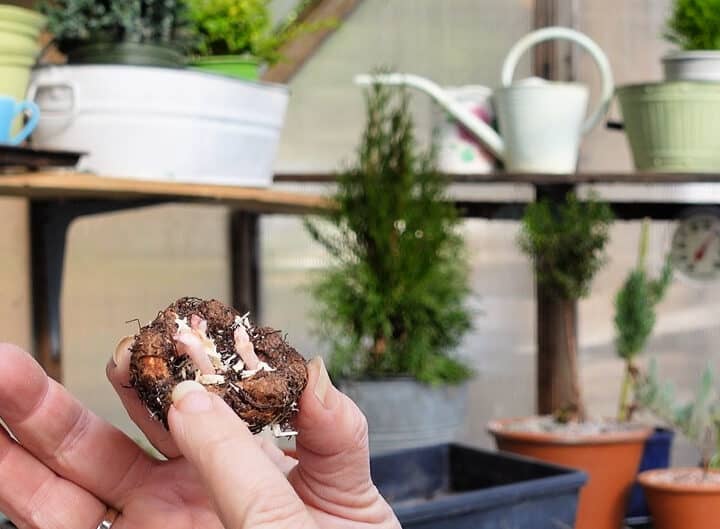
When to plant tuberous begonias?
Begonias are sensitive to cold and shouldn’t be planted or placed outside until the nighttime temps are above 50 degrees Fahrenheit (10 degrees Celsius) and the soil temperature is 60 degrees. Starting indoors 8 weeks before your last frost date is easy is the only way to get an early start.
Planting Begonias in Pots
Starting begonias in small pots is a great way to start them. They can be potted up later into larger containers. Or planted out in the garden when the weather warms.
Start with clean, sterilized pots. I re-use these little plastic pots over and over again. They are of good quality and I have had them for over 10 years. I also re-use the pots from plants I buy at nurseries.
Fill the pots with 2 inches of quality organic potting soil. I often make my own potting soil since in the Spring I am filling so many pots that it is more cost-effective for me.

This leaves room for the tuber and more soil. Place the tuber on the soil and firm it in gently.
As an alternative, you can plant them in a tray of soil and pot up when they have a couple of leaves. This saves some room if you have a lot of plants starting. I show how I do that in my Dahlia from cuttings post.
Note there is plenty of room for more potting mix. This tuber is a very good size and nearly fills the pot.

Cover the tuber with more soil leaving a bit of room to water. Water in enough to moisten the soil. If you choose to plant without pre-sprouting then don’t water until you see shoots emerging from the soil.

Where to Place Begonia pots
Choose a warm spot in your home and wait a week or two for the leaves to emerge. A room at 70 degrees will work wonderfully for this.
Once the leaves appear place the begonias on a bright windowsill or under grow lights. When the begonias have a couple good sized leaves then transplant into larger pots.
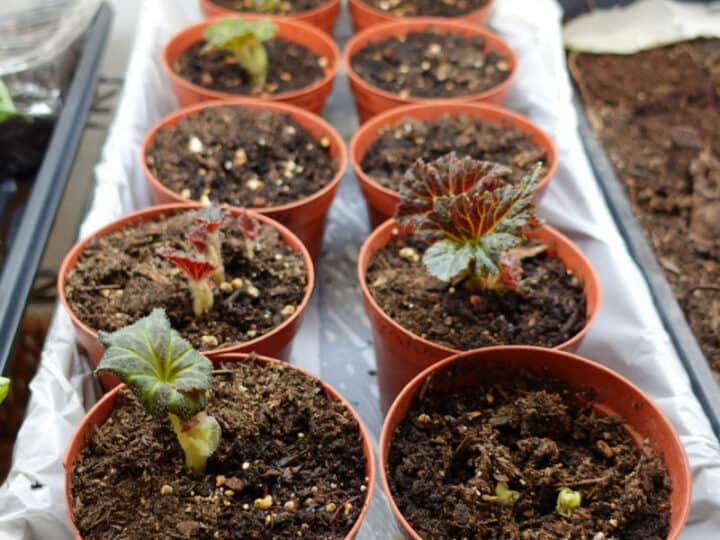
A good rule of thumb is 6″ pot for one begonia, an 8″ pot for 2 begonias and a 12″ pot for 3 begonias. If your goal is larger flowers then pinch off all but a few stems. If you want a full bushier plant with more yet smaller flowers then just let it grow on.
I will share how these begonias do this summer. If you haven’t already subscribe to be updated via email. It is free!
Happy Gardening!
Planting Begonias

Planting begonias in pots to get an early start on flowering. Starting with dormant tubers, pots, and some potting soil you can have beautiful blooms in your shadier areas soon. Plus starting tuberous begonias from bare root is a budget-friendly way to get an abundance!
Materials
- 4 inch pots
- begonias tubers
- potting soil
- grow lights (optional)
- heat mat (optional)
Tools
- scooper for soil
Instructions
- Sterilize pots if reusing from last season
- Pre-sprout tubers in a warm place of your home by setting out until sprouts form
- Fill 4 inch pots 2/3rds full with potting soil
- Place 1 begonia tuber into pot pressing into soil gently.
- Cover with 1 inch of soil
- Set in warm place of your home or on a heat mat
- When sprouts emerge, place under grow lights or on a sunny windowsill
- Pot up into larger pots when 2 or 3 leaves develop.
- Rule of thumb for sizes of pots: 6 inch pot for 1 begonia, 8 inch pot for 2 begonias, and a 12 inch pot for 3 begonias
Notes
There are several types of begonias, this list is for the Tuberous Begonias that produce beautiful flowers during the summer. They prefer bright shade and humidity.


